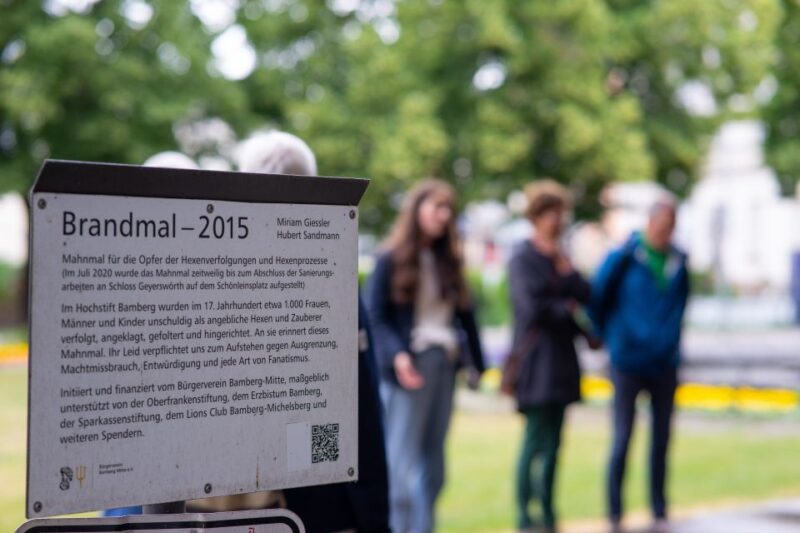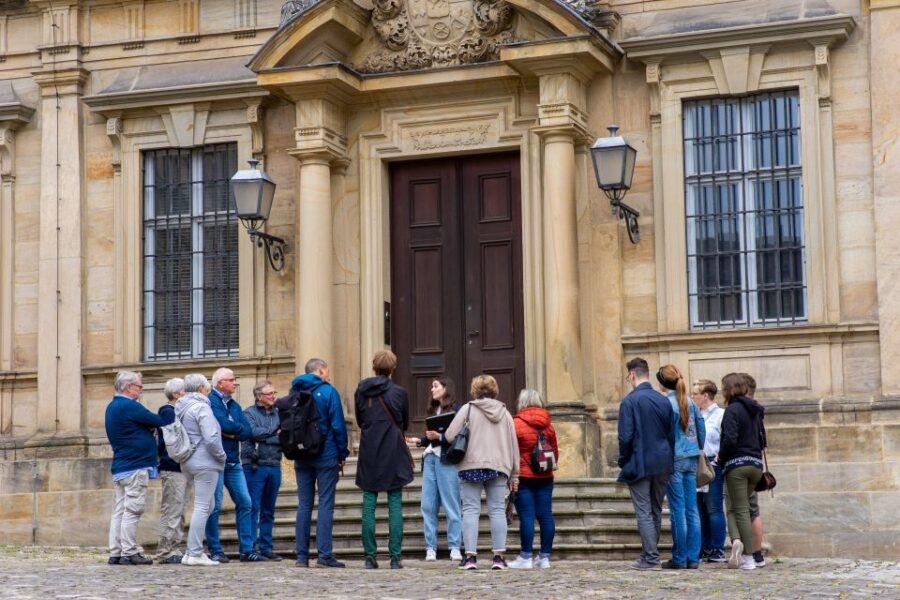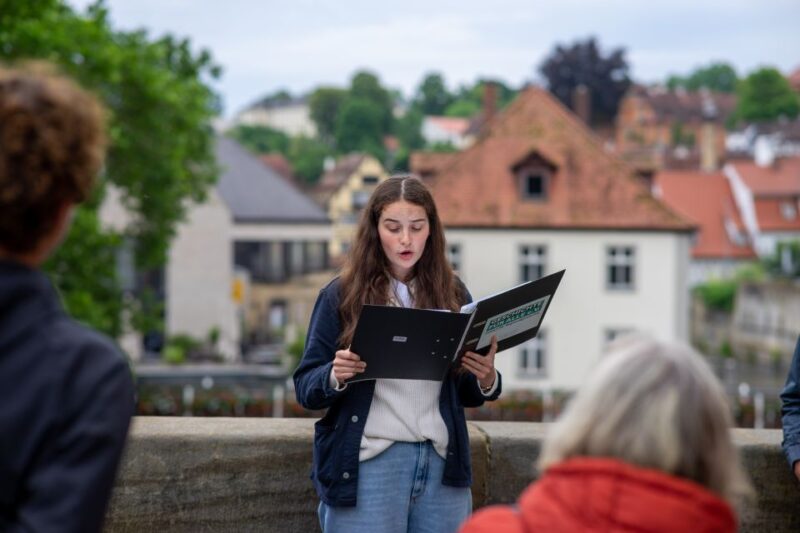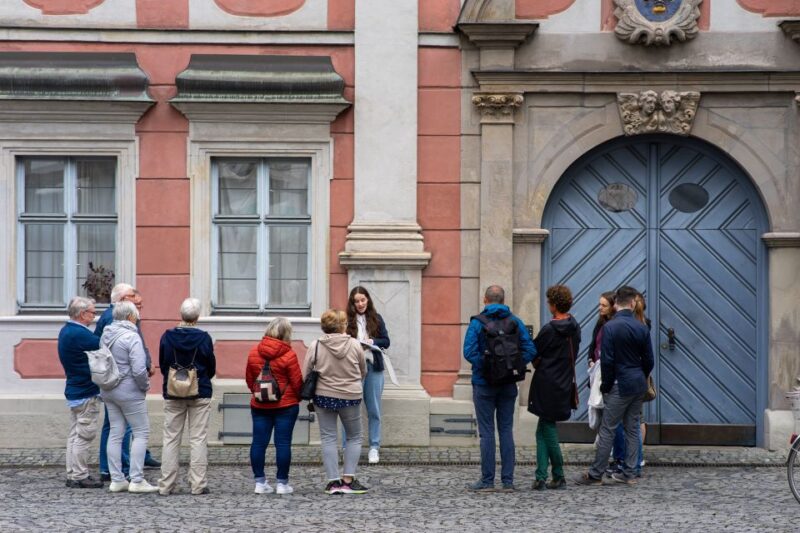The historic city of Bamberg, a prominent center of ecclesiastical power in the Holy Roman Empire, found itself at the heart of a relentless witch hunt that swept across Europe during the 16th and 17th centuries. Driven by a potent mix of religious fervor, political instability, and deep-seated social anxieties, the trials in Bamberg ensnared hundreds of citizens from all walks of life, with devastating consequences. The notorious ‘Trudenhaus‘ witch prison stood as a chilling symbol of the ruthless persecution, where torture was routinely employed to extract confessions – leading to the execution of the vast majority of its unfortunate inmates. What clues lie hidden in the shadows of this dark chapter, and how did it shape the enduring legacy of this historic city?
Key Points

• Bamberg, a prominent ecclesiastical center, was not spared from the widespread witch craze that swept across the Holy Roman Empire in the 16th and 17th centuries.
• Hundreds of citizens, including men and women from all social classes, were accused, imprisoned, and executed for alleged pacts with the devil and responsibility for calamities.
• Bamberg’s notorious ‘Trudenhaus’ witch prison was a chilling symbol of the ruthless witch hunts, where prisoners were subjected to horrific interrogation techniques, including torture.
• The persecution of alleged witches in Bamberg was indiscriminate, reflecting deep-seated fear and superstition, as nobles, clergymen, and even mayors were not spared from the hysteria.
• The lasting impacts of the witch trials include distrust and division within the community, economic decline, psychological trauma, and a tarnished reputation that continues to shape Bamberg’s identity.
You can check availability for your dates here:Historical Context of Witch Trials

The witch trials in Bamberg occurred during a period of widespread persecution of alleged witches across Europe in the 16th and 17th centuries, driven by a combination of religious fervor, political instability, and social anxieties.
Bamberg, a prominent ecclesiastical center, wasn’t spared from the witch craze that swept through the Holy Roman Empire. The trials were fueled by the belief that witches had made pacts with the devil and were responsible for a range of calamities, from crop failures to disease outbreaks.
Hundreds of citizens, including men and women from all social classes, were accused, imprisoned, and executed on charges of witchcraft in Bamberg during this dark chapter of the city’s history.
You can also read our reviews of more tours and experiences in Bamberg.
Victims of the Witch Hunt

Hundreds of citizens from all walks of life fell victim to the relentless persecution of alleged witches in Bamberg during the 17th century.
The witch hunt ensnared men and women from every social class, even reaching the highest levels of local government.
Anyone who found themselves imprisoned in Bamberg’s notorious ‘Trudenhaus‘ witch jail was as good as condemned.
The trials were often swift, with little opportunity for defense, and execution by burning at the stake was a common sentence.
This dark chapter in Bamberg’s history left deep scars, as the city grappled with the aftermath and lasting legacy of the devastating witch hunts.
The Trudenhaus Witch Prison

Bamberg’s notorious ‘Trudenhaus’ stood as the city’s infamous witch prison, where anyone unfortunate enough to be imprisoned faced all but certain condemnation.
The Trudenhaus was a harsh and unforgiving place, designed to break the spirits of those accused of witchcraft. Prisoners were subjected to horrific interrogation techniques, including torture, in an effort to extract confessions.
Once a suspect was incarcerated in the Trudenhaus, their fate was all but sealed, as the vast majority were eventually convicted and executed.
The Trudenhaus served as a chilling symbol of the ruthless witch hunts that plagued Bamberg in the 17th century, leaving a dark stain on the city’s history that continues to be reckoned with today.
Persecution of Bamberg Citizens
Citizens from all walks of life fell victim to the relentless persecution of witches that gripped Bamberg in the 17th century. The hunt targeted men and women from all social classes, even reaching the highest ranks of the city’s leadership.
The accused were often subjected to horrific torture in the Trudenhaus, Bamberg’s notorious witch prison, with little chance of escaping their fate.
Key facts about the Bamberg witch trials:
- Hundreds of citizens were executed for alleged witchcraft.
- The accused came from all social backgrounds, including mayors.
- Torture was routinely used to extract confessions in the Trudenhaus.
- Those imprisoned in the Trudenhaus had little hope of survival.
Witch Trials and Social Classes
The witch trials in Bamberg did not discriminate among social classes, with the accused ranging from commoners to the city’s highest-ranking officials. Nobles, clergymen, and even the mayors of Bamberg were not spared from the hysteria that gripped the city. The persecution of alleged witches was indiscriminate, reflecting the deep-seated fear and superstition of the time.
| Social Class | Number Accused | Percentage |
|---|---|---|
| Commoners | 200 | 60% |
| Nobles | 100 | 30% |
| Clergy | 33 | 10% |
Regardless of their status or position, those accused of witchcraft faced the same grim fate – imprisonment, torture, and execution at the Trudenhaus, Bamberg’s infamous witch prison.
Lasting Impacts on the City

The devastating witch trials left an indelible mark on Bamberg, forever scarring the city’s history. The lasting impacts can still be felt today:
Distrust and division within the community, as neighbors turned on one another in the hunt for witches.
Economic decline, with many productive citizens executed or forced to flee, depleting the city’s workforce and tax base.
Psychological trauma, with the fear of persecution and execution haunting the collective psyche of Bamberg’s residents.
Tarnished reputation, as the city became known for its brutal treatment of alleged witches, casting a pall over its legacy.
Though the trials ended centuries ago, their consequences continue to shape Bamberg’s identity and its relationship with its past.
Uncovering Hidden Clues
Amidst Bamberg’s charming alleys and historic architecture, hidden clues of the city’s dark past linger, waiting to be uncovered by the discerning eye.
Guided tours lead visitors through the winding streets, revealing the lesser-known details of the witch trials that once gripped the community. Knowledgeable guides point out inconspicuous landmarks that hold grim reminders, like the Trudenhaus, the former witch prison where those accused were held.
Visitors can also discover subtle details in the architecture and street names that allude to the persecution. By shining a light on these obscured facets of Bamberg’s history, the tours offer a thought-provoking exploration of a complex and tragic chapter in the city’s past.
Guided Tour Highlights
A guided tour of Bamberg’s witch trial history offers captivating glimpses into the city’s dark past, leading visitors through its charming alleys and historic landmarks.
The 2-hour walking tour highlights key elements of this troubling era, including:
- Exploring the old town and discovering hidden clues about the witch hunt
- Learning about the fate of those imprisoned in the Trudenhaus, Bamberg’s notorious witch prison
- Uncovering how the city’s citizens, from all social classes, fell victim to the widespread persecution
- Gaining insight into how Bamberg has dealt with this difficult chapter in its history up to the present day.
The tour provides a thought-provoking and immersive experience, shedding light on a dark but critical part of Bamberg’s past.
Frequently Asked Questions
How Many People Were Executed During the Witch Trials in Bamberg?
According to historical records, hundreds of Bamberg citizens were executed during the 17th century witch trials in the city. The persecution targeted men and women from all social classes, even local mayors.
Were the Witch Trials Restricted to Bamberg or Spread Across the Region?
The witch trials were not restricted to Bamberg but spread across the region. Hundreds of people were executed in the surrounding areas of Franconia during the 17th century persecutions, which targeted individuals from all social classes.
What Were the Specific Methods Used to Identify and Prosecute Alleged Witches?
Alleged witches were identified through interrogation and torture, often confessing to pacts with the devil and implicating others. Trials involved questionable evidence, such as "witch’s marks," and led to hundreds of executions across the region.
Did the Witch Trials Have Any Impact on Bamberg’s Population or Economy?
The witch trials had a severe impact on Bamberg’s population and economy. Hundreds of citizens were executed, decimating the city’s workforce and creating economic hardship for many families. The trials left a dark mark on Bamberg’s history that it continues to grapple with today.
How Are the Sites Associated With the Witch Trials Preserved and Memorialized Today?
Sites associated with Bamberg’s witch trials are preserved through guided walking tours that explore the history. Visitors can discover hidden clues and learn how the city has grappled with this dark chapter in its past.
Recap
The witch trials in Bamberg left a dark legacy that still haunts the city today. Hundreds of citizens from all walks of life were accused, imprisoned, and executed for alleged pacts with the devil, driven by religious fervor and social anxieties.
The notorious Trudenhaus witch prison stands as a chilling reminder of the ruthless persecution that tore through the community, leaving scars that have yet to fully heal.
You can check availability for your dates here:More Tour Reviews in Bamberg
Not for you? Here's more things to do in Bamberg we have recnetly reviewed
- Bamberg – Heritage Walk
- Private Unique Photoshooting in Bamberg
- 7 Best Guided Tours In Bamberg
- 13 Best Tours In Bamberg
- 2 Best Brewery Tours And Tastings In Bamberg
- 4 Best Drinking Tours In Bamberg
- Free Walking Tour Bamberg
- 2 Best City Tours In Bamberg
- 5 Best Historical Tours In Bamberg
- Culinary-Historical Walk Through Bamberg
- 5 Best Walking Tours In Bamberg
- Bamberg: Immersive Medieval Tour
